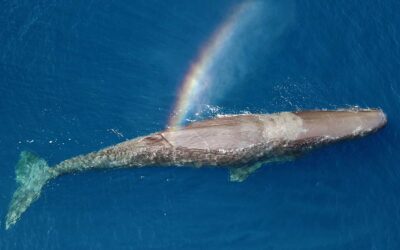Last time, we spoke to Joosje, our own Social Media Manager and soon-to-be wilderness guide, about her preparation. This time, she takes us along on her three-week-long fieldwork during which she learns about navigation skills, expedition planning, and having a ‘guide mindset’. The theory has now been put to use, and lots of lessons have been learned.
Becoming a conscious and aware person takes time—and good examples. Adrienn Riesz works at Kindergarten Romonya in Hungary and knows that however young your child may be, the right education can have a lasting impact. At Kindergarten Romonya, children learn so much more than the usual stuff. Decreasing the use of plastic, cleaning up nature, and planting trees and seeds for a healthy environment are all part of their hands-on education. Hearing Adrienn talk about her work is surely an inspiration to all.
Amir Nizar Zuabi is the Artistic Director of The Herds—a traveling public art display with life-sized puppets. Concerned about climate change, ecosystem degradation, and a lack of awareness and action, Amir and his fellow artists came up with the idea to travel from the Congo Basin (the cradle of humankind) to the Arctic Circle (the place where, in the end, all species will flee to) with sustainably made and realistically moving puppets. If you have ever doubted the impact of art, this story will easily prove you otherwise.
Sometimes, life can take an unexpected turn. José Horacio de Moraes (also known as Juca) used to fear the jaguars roaming around his house. Now, he is the one who leads scientists like Abbie Martin into the field to find them and study them. Thanks to them, Abbie is now running the biggest jaguar identification project worldwide, and she has uncovered many interesting things already. This story is for you if you are keen on learning more about this elusive species and how Abbie conducts her research in a region largely inaccessible by car.
Basically, every skill and every career can be put to good use in the conservation sector. That isn’t always crystal clear, though. It took Gareth Broekhuizen a while to discover that his experience as a commercial pilot could be put to use in, for him, a more purposeful way. He now flies over the mighty South Luangwa Valley to help not one, but two organizations at the same time.
Paper Parks—have you ever heard about them? These parks are well managed and protected on paper, but in real life, that isn’t really true. In Belize, Tapir Mountain used to be such a park. Nowadays, Aaron Juan and his team run Belize Karst Habitat Conservation and the protection of Tapir Mountain is at the forefront of what they do. Against the odds, they still made it happen.
Landlocked and keeper of many desired animals, Laos has been dealing with wildlife trafficking for many decades. Jeremy Phan works at the Laos Conservation Trust for Wildlife, where they rescue, rehabilitate, and release wildlife attacked by this trade. When Jeremy, his team, and all the animals had to relocate, it seemed like an impossible task. But when things work out, they often become better.
Moving from Egypt to Canada and starting a new program for youth in the Blue Economy is just what Omar Hussein did. Now he runs Brilliant Blue, a part of Brilliant Labs, and hosts annual competitions to introduce 12- to 18-year-olds to a world that they might have never heard about or thought of. And it isn’t for Canadians only! Everyone worldwide can participate, as long as they participate as part of a team.
And last but not least, this magazine also includes a species new to nature; the Popa langur, an endangered species; the Olive ridley turtle, our Stargazer Stephanie Broekarts, and our famous infographic, which is about Rights of Nature this time!
It’s packed with great stories and images, so read your copy now!



